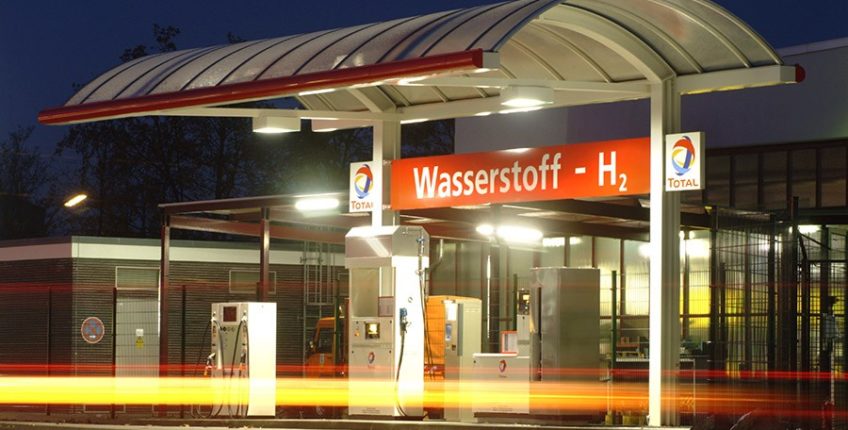Aside from the enlargement of the hydrogen vehicle fleets and the expansion of the hydrogen refuelling infrastructure in the CEP regions, the fundamental project goals of the CEP in its second phase were the development of the generation infrastructure and the wide-scale introduction of renewably-produced hydrogen for use as a fuel in passenger vehicles and buses. The project constituted an essential element in the achievement of these goals.
At the focus was the further operation one of the hydrogen refuelling stations erected in Heerstrasse in Berlin-Spandau by TOTAL Deutschland GmbH as part of the EU project HyFLEET:CUTE. At the time of the beginning of the project, this facility was the only integrated hydrogen refuelling station ready for operation in Berlin. Therefore it has for some time delivered a significant proportion of the supply services for the CEP passenger car fleet as well as for the hydrogen buses of the Berliner Verkehrsbetriebe (Berlin public transport company).
The goals of this project were respectively, the further operation, upgrading and in part optimising retrofitting of the existing facilities. At the same time renewable energies were for the first time to be substantially incorporated in the generation of the hydrogen used in the CEP and completely replace the LPG used to this point at this location. Alongside this a fundamental change of the supply concept for gaseous hydrogen was to take place, with the aim of increasing the proportion of renewably-generated hydrogen successively by 50% in line with the objectives of the CEP in the course of phase III of the CEP.
The refuelling station was put into operation in spring 2006. It had refuelling facilities for high-density gaseous hydrogen for pressure levels of 350 and 700 bar, a hydrogen reformation from LPG which was retrofitted as part of this project and an ion compressor station. The facility was equipped with dispensing facilities for CGH2 700 bar, CGH2 350 bar and LH2 in the public area as well as CGH2 350 bar and LH2 in the area of the adjacent bus depot of the Berliner Verkehrsbetriebe (BVG). Both LH2 filling points were decommissioned during the project, after BMW ceased the operation of its LH2 fleet in mid-2011.
High availability of the refuelling station was of central importance, especially because it served at the beginning of the project as the lone supplier to the Berlin bus fleet. This was valuable to the fleet in terms of real-life testing of the supply pathways with wind hydrogen. As a starting point for good infrastructural provision of services to the Berlin region, this location was to create the conditions for long-term positive customer loyalty to hydrogen as a fuel in company fleets.
ENERTRAG AG played a major role in the implementation of the overall project, which guaranteed supply to the refuelling station location using electrolytically wind-generated hydrogen from Prenzlau. For this ENERTRAG expanded the activities already running at the beginning of the project in the hybrid power station under construction in Prenzlau to include different modules. While the electrolysis facility was not a part of the project and already funded as part of the statesubsidised hybrid power station, ENERTRAG was also to build and operate a hydrogen temporary storage system including a compressor unit, a pipeline and a trailer filling station. In addition the hydrogen logistics were to be worked out and implemented between TOTAL and ENERTRAG for supplying the Berlin consumer.
Funding Code
03BV217

